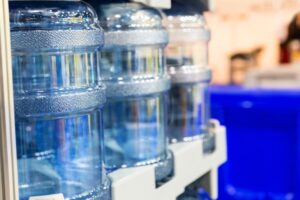How Much Water Is Wasted By Water Softeners?
Water softeners are a popular addition to homes across the world, particularly in areas where hard water is common. They are used to remove minerals from the water, such as calcium and magnesium, which can cause a range of problems in the home. While they are effective at improving water quality, they also use water themselves, which can lead to concerns about waste. In this article, we will explore how much water is wasted by water softeners.
(Looking for “Residential Filtration Services“? Contact us Today!)

Water softeners work by using a process called ion exchange. Water flows through a tank that contains resin beads coated with sodium ions. The hard water minerals, such as calcium and magnesium, are attracted to the resin beads and cling to them, while the sodium ions are released into the water, softening it. Once the resin beads are saturated with minerals, they need to be cleaned, or regenerated, to be effective again. This is where water waste can occur.
During the regeneration process, a brine solution (a mixture of salt and water) is used to flush the resin beads and remove the minerals. This solution then needs to be flushed out of the system with fresh water, which can lead to water wastage. The amount of water used during regeneration depends on the size of the water softener and the frequency of regeneration.
On average, a water softener will use between 50 and 100 gallons of water during each regeneration cycle. The frequency of regeneration varies depending on the hardness of the water and the size of the system. A typical home water softener might need to be regenerated once a week, which would equate to approximately 200-400 gallons of water used per month.
However, it’s important to note that not all water softeners waste the same amount of water. Some newer models are designed to be more efficient, using less water during the regeneration process. For example, some systems use counter-current regeneration, which allows for more effective resin bead cleaning using less water. Additionally, some systems are designed to only regenerate when necessary, based on actual water usage, which can help reduce water wastage.
In addition to the water used during regeneration, water softeners also require water for their own maintenance. For example, they need to be back washed periodically to prevent blockages in the system. Backwashing involves flushing water through the system in the opposite direction to the normal flow, which can lead to some water wastage.
Overall, while water softeners do use water, the amount of water wastage can be managed through careful system selection and maintenance. Additionally, the benefits of using a water softener in terms of improved water quality and reduced damage to pipes and appliances can outweigh any concerns about water usage.
In conclusion, the amount of water wasted by water softeners varies depending on the size of the system, the frequency of regeneration, and the efficiency of the system. On average, a water softener will use between 50 and 100 gallons of water per regeneration cycle. However, newer models are designed to be more efficient and can use less water during regeneration. While water softeners do use water, the benefits in terms of improved water quality and reduced damage to pipes and appliances can outweigh any concerns about water usage.

